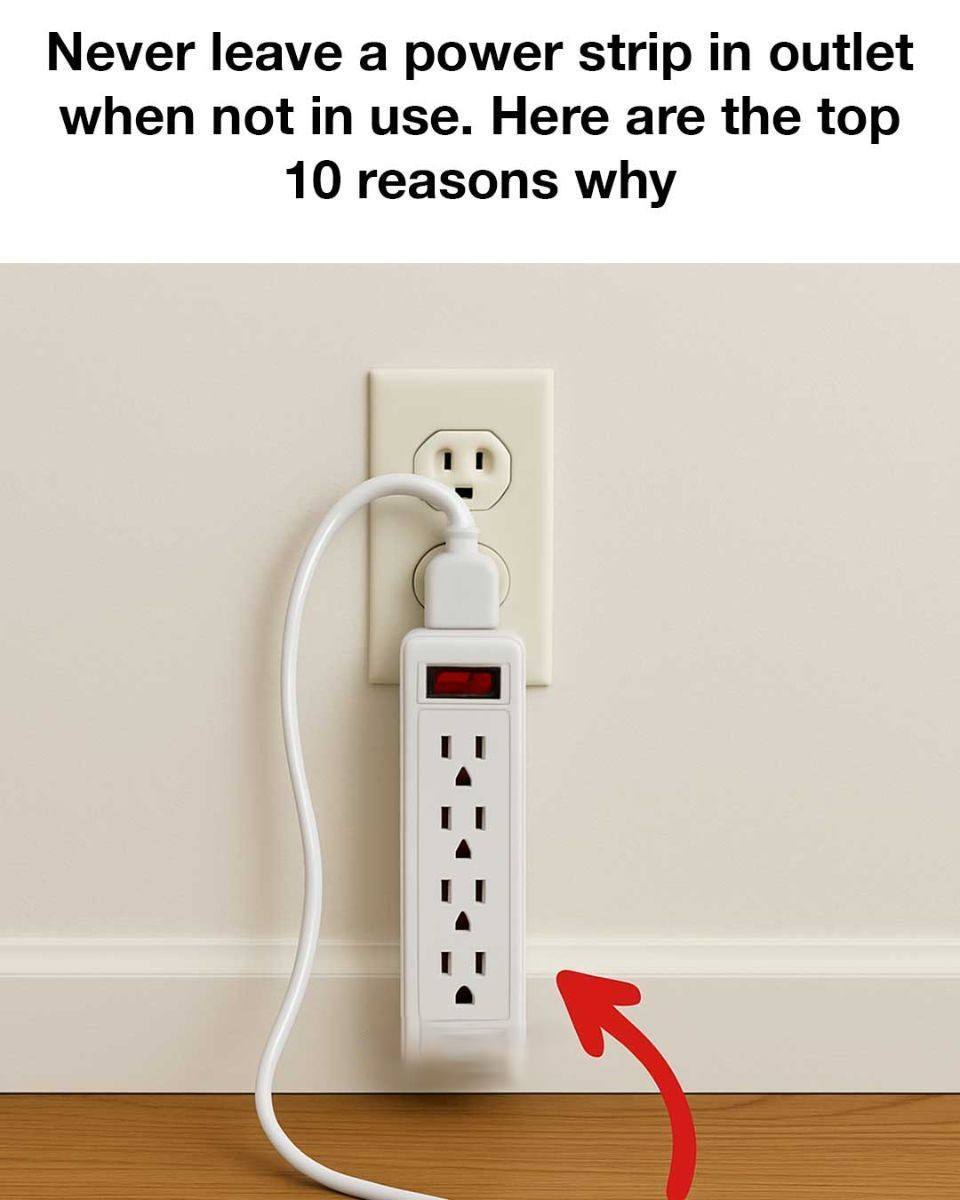Power strips are a common household and office item, providing the convenience of powering multiple devices from a single outlet. However, leaving them plugged in when not in use can pose several risks. Understanding these dangers is essential for ensuring safety and energy efficiency in your environment.
1. Fire Hazard Due to Overheating
Power strips can overheat if overloaded or used continuously without breaks, especially if they are of poor quality or placed in areas with inadequate ventilation. Overheating may cause the plastic casing to melt, potentially igniting nearby flammable materials. Unplugging power strips when not in use reduces this risk significantly.kolbelectric.com
2. Increased Energy Consumption and Costs
Even when devices are turned off, power strips can draw a small amount of electricity, known as ‘phantom load’ or ‘standby power.’ This unnecessary energy consumption can accumulate over time, leading to higher electricity bills. By unplugging power strips when they are not in use, households can reduce their energy consumption and save money.WikipediaHomebuilding
3. Susceptibility to Electrical Surges
Power strips left plugged in are vulnerable to electrical surges caused by lightning strikes or fluctuations in the power grid. These surges can damage connected electronics, leading to costly repairs or replacements. Unplugging power strips when not in use can protect valuable electronic devices from such damage.Reddit
4. Risk of Short Circuits
A short circuit can occur if there is a fault in the wiring of the power strip or if the strip is damaged. This can result in sparks, smoke, or even a fire. By unplugging power strips when they are not in use, the risk of a short circuit occurring is significantly reduced, enhancing overall safety.
5. Decreased Lifespan of Electronic Devices
Continuous exposure to electrical current, even when devices are turned off, can reduce the lifespan of electronic components. Some devices may still receive a small amount of power, leading to wear and tear over time. Unplugging power strips when not in use can help preserve the longevity of electronic devices.Wikipedia
6. Accumulation of Dust and Debris
Power strips that are left plugged in and unused can accumulate dust and debris, which can interfere with their functionality. Dust can cause overheating and may even lead to electrical fires if it gets into the sockets. Regularly unplugging and cleaning power strips can prevent dust buildup and ensure they operate safely.
7. Tripping Hazard and Physical Safety
Power strips and their cords can create tripping hazards, especially if they are placed in high-traffic areas. Unplugging and storing power strips when not in use can reduce the risk of trips and falls, contributing to a safer environment.
8. Risk of Water Damage
In areas prone to moisture, such as kitchens or bathrooms, leaving power strips plugged in increases the risk of water exposure, which can lead to electrical shocks or fires. Unplugging power strips in these areas when not in use adds an extra layer of safety.
9. Potential for Unauthorized Use
Leaving power strips plugged in can lead to unauthorized use, especially in public or shared spaces. Unplugging them when not in use ensures that only intended devices are connected, maintaining control over electrical usage.
10. Encourages Mindful Energy Consumption
Regularly unplugging power strips promotes awareness of energy consumption habits. This mindfulness can lead to more sustainable practices, reducing overall energy usage and environmental impact.
Conclusion
While power strips offer convenience, it’s crucial to use them responsibly. Unplugging power strips when they are not in use mitigates various risks, including fire hazards, energy waste, and equipment damage. By adopting this simple habit, you contribute to a safer and more energy-efficient environment.

